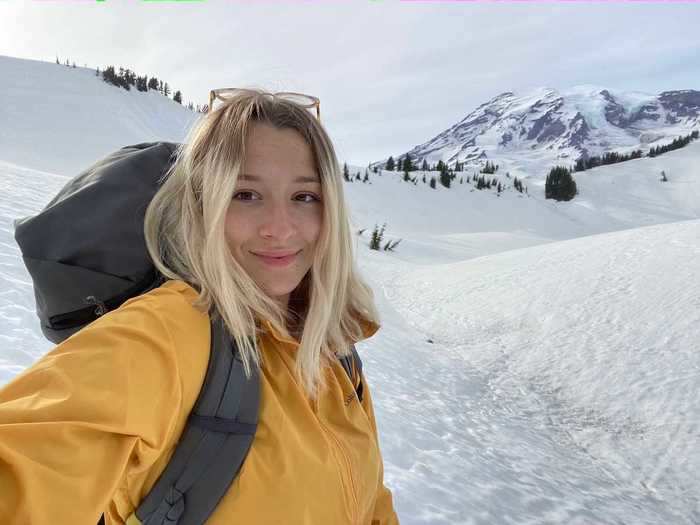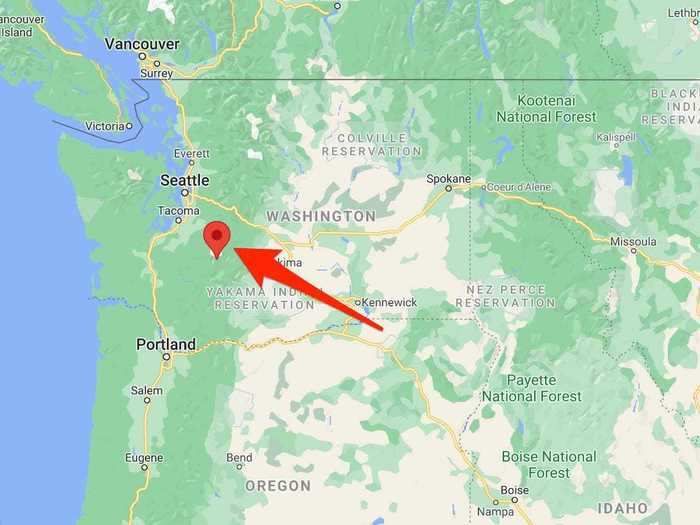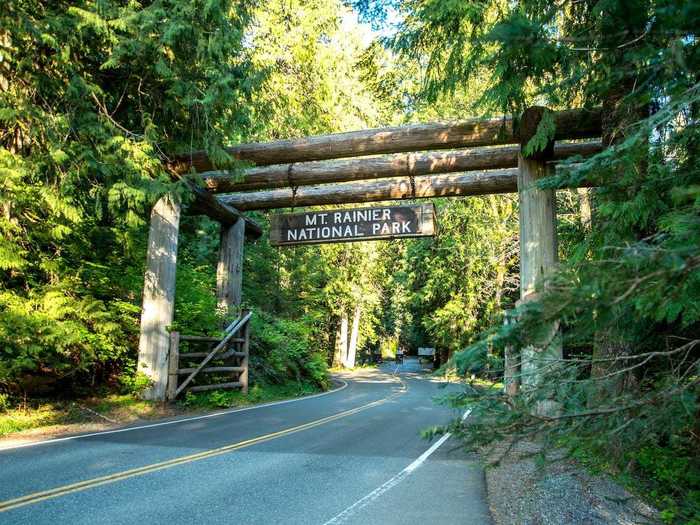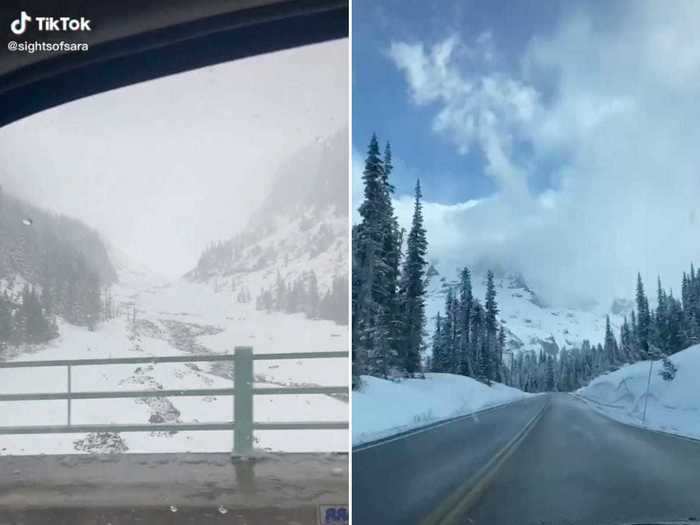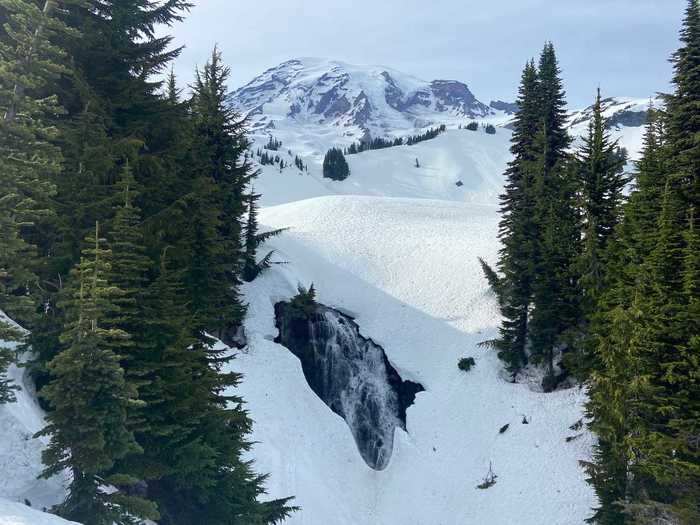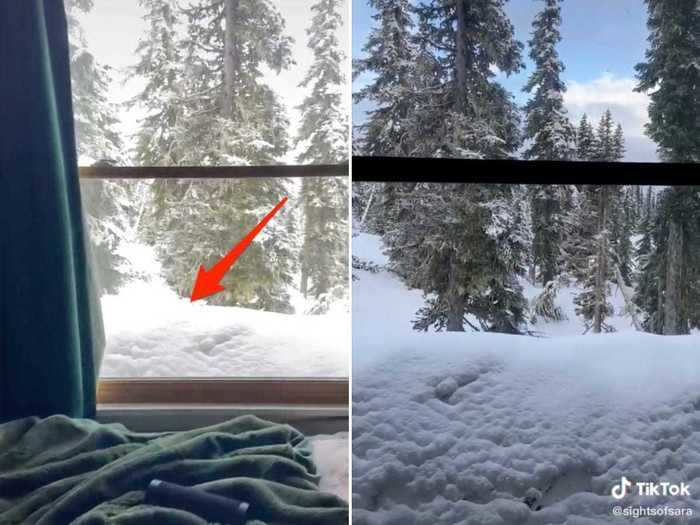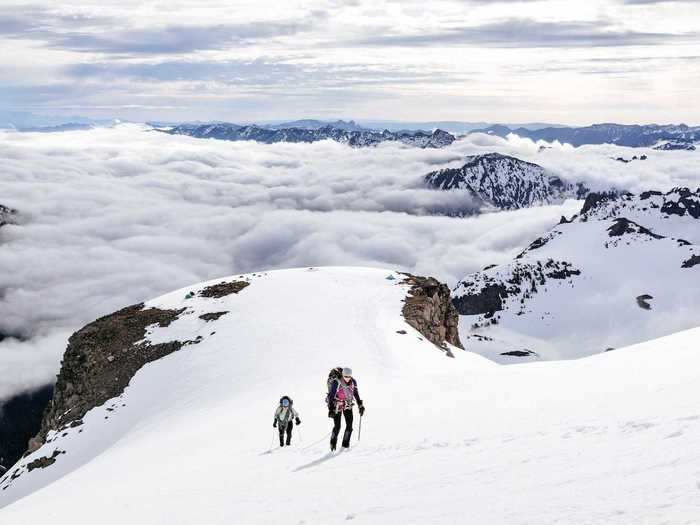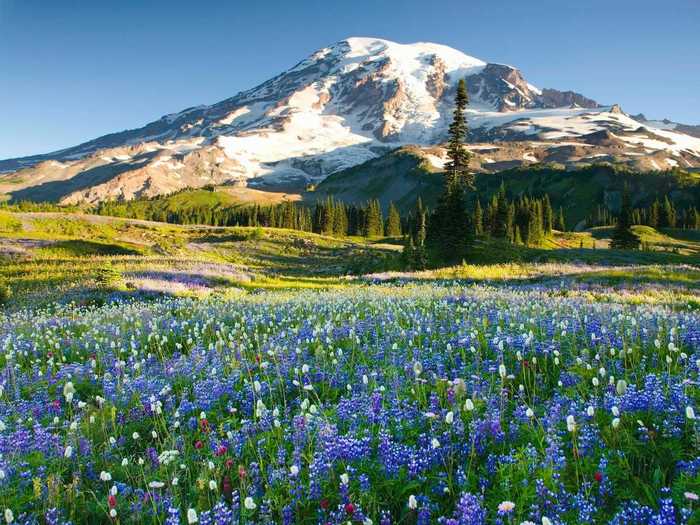Sara Randall spent a month living in Mount Rainier National Park, which happens to be home to the snowiest spot in the US.
Sara Randall spent a month living in Mount Rainier National Park.
Sights of Sara
Sara Randall told Insider that growing up outside of Rochester, New York, she lived in a town that was "so small that the only thing to do was dream about leaving."
After graduating from high school, she did. The 21-year-old is driving around the US, living out of her car, and recording her adventures across social media under Sights of Sara.
In May and June, Randall spent more than a month living and working in Mount Rainier National Park in Washington, which she documented on her TikTok account, @sightsofsara. She has 539,000 followers at the time of writing.
When Randall first arrived at the national park, she told Insider that she was unaware — but quickly learned — that the park gets the most recorded snowfall in the US, according to The Farmer's Almanac.
The national park is located 60 miles southeast of Seattle. Paradise, an area within the park, gets an average of 53 feet of snow every year.
An arrow points to Paradise, an area in Mount Rainier National Park that receives the most snow.
Google Maps
Randall told Insider that she worked for the National Park Service at Paradise Inn, a hotel in the 236,380-acre national park.
The area, known as Paradise, is known for its snowfall. It gets an average of 53.6 feet of snow each year, according to the National Park Service.
For decades, it held the world record for the most snowfall in a single year. Between 1971 and 1972, Paradise received 93.5 feet of snow, the National Park Service's website states.
Today, Paradise competes with snowy places like Aomori City in Japan, which is known as the snowiest place in the world.
Randall said the park's entrance is a little deceptive since there usually isn't much snow. But once you enter, you quickly realize why it's earned its title.
The entrance to Mount Rainier National Park.
4nadia/Getty Images
When Randall arrived at the park, she said she expected Paradise to be as its name suggested — a paradise.
"I thought I was going to drive to the top, and there were just going to be meadows and wildflowers," she told Insider.
But after entering the park and as elevation changes, it gets snowier and snowier until there's nothing but bright, white snow in every direction, she said.
One of the first things Randall said visitors will notice is that the snow towers over all the cars.
Snow towers over cars in a parking lot in Mount Rainier National Park.
Sights of Sara
When Randall arrived in May, she said it was blizzarding. She pulled into the parking lot, where snow towered over all the parked cars.
The National Park Service keeps the roads and parking lots clear, but outside of the asphalt areas, the snow quickly builds up, Randall said.
Often, it's too snowy and foggy to even see the mountain range.
Sara Randall said the snow made driving much more intense.
Sights of Sara
Randall said she can go days without seeing Mount Rainier and the other mountains in the Cascade Range.
The fog also makes driving a much scarier experience.
"It is intense," she said. "You can't even drive home or drive to the dorms because it is literally so foggy."
Avalanches are also a common occurrence.
An image of a snowy area in Mount Rainier National Park.
Sights of Sara
Randall said that avalanches happen frequently at the national park.
According to the National Park Service, thousands happen every year at Mount Rainier, and most are caused by humans.
For the most part, Randall said that she avoided them, but during her month at the park, there was a time an avalanche blocked her and her friends from returning home.
Fortunately, everyone was safe and she spent the night at another inn in the national park, she said.
Snow reaches up to the window of her two-story bedroom.
An arrow points to where the snow reaches outside her two-story bedroom.
Sights of Sara
When Randall was working for the National Park Service, she said she lived in a set of dorms on park property. From her window, Randall said she could snow in every direction — even below her.
The snow reaches the bottom of her bedroom window, which is on the second floor.
Randall said the amount of snow can make living in the national park challenging since there are limited things to do.
Two mountain climbers ascending snowy slope in Mount Rainier National Park.
Andrew Peacock/Getty Images
Randall said staying at the national park long-term isn't for everyone.
"You never wanted to go outside. We were all just waiting for it to melt," Randall said of the snow.
But for those who love snow, visiting Mount Ranier National Park could be the dream destination.
"You have to be into some really extreme sports to appreciate the snow," she said.
By summer, the snow has melted and visitors can enjoy a greener version of the national park.
Wildflowers bloom in Mount Rainier National Park.
Rene Frederick/Getty Images
Even the snowiest place in the country experiences warmer weather.
If you're looking to explore Mount Rainier without the snow, the best bet is to visit between mid-July and September, according to the National Park Service.
That's when the majority of the snow has melted, and people can enjoy summer activities like hiking and mountain biking.

